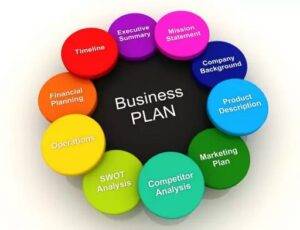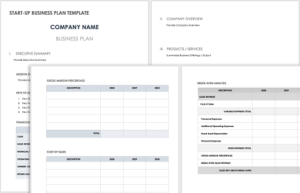In today’s competitive business landscape, a well-structured and comprehensive business plan is your roadmap to success. Whether you’re a startup entrepreneur looking to secure funding or an existing business owner aiming to chart a new course, having a solid business plan is crucial. The good news is that you don’t have to start from scratch. In this article, we’ll provide you with a free business plan template and walk you through the process of creating a winning business plan.
Understanding the Importance of a Business Plan
What is a Business Plan?
- A business plan is a detailed document that outlines your business’s goals, strategies, financial projections, and operational plans.
- It serves as a roadmap for your business and a communication tool for potential investors, partners, and employees.
Why Do You Need a Business Plan?
- Secure funding: Investors and lenders often require a business plan to evaluate the viability of your business.
- Strategic direction: A well-crafted plan helps you define your business’s objectives and strategies.
- Risk mitigation: It helps you identify potential challenges and develop solutions.
Components of a Business Plan

Executive Summary
- A brief overview of your business, its mission, and the problem it solves.
- Key highlights of your plan, including financial projections and funding requirements.
Business Description
- Your business’s history, vision, and values.
- Information about your products or services, target market, and competitive advantages.
Market Analysis
- Research on your industry, market trends, and competitors.
- Details about your target audience and how your business will meet their needs.
Marketing and Sales Strategies
- Your marketing plan, including advertising, branding, and customer acquisition.
- Sales strategies, such as pricing, distribution, and sales channels.
Organization and Management
- Your company’s structure, ownership, and management team.
- Profiles of key team members and their roles.
Product or Service Line
- Detailed information about your offerings.
- Any patents, trademarks, or intellectual property related to your products or services.
Funding Request
- If you’re seeking funding, specify the amount, purpose, and terms.
- Provide a breakdown of how you’ll use the funds.
Financial Projections
- Historical financial data (if applicable) and future projections.
- Include income statements, balance sheets, cash flow statements, and break-even analysis.
Appendix
- Additional information, such as resumes, legal documents, and market research data.
- Any other relevant supporting documents.
Using the Free Business Plan Template

Download the Template
- Click the link below to download our free business plan template.
[Insert Download Link]
Filling Out the Template
- Follow the template’s structure, starting with the executive summary and proceeding through the sections.
- Use the provided prompts and guidelines to complete each section.
Tips for Success
- Be clear and concise: Avoid jargon and use simple, straightforward language.
- Do your research: Ensure your market analysis is based on reliable data.
- Seek feedback: Share your plan with mentors or advisors for valuable input.
Reviewing and Refining Your Business Plan
Proofread and Edit
- Check for spelling and grammar errors.
- Review the financial projections for accuracy.
Seek Feedback
- Get feedback from trusted colleagues, mentors, or professional advisors.
- Incorporate their suggestions to improve your plan.
Regular Updates
- A business plan is a living document. Update it periodically to reflect changes in your business.
A well-prepared business plan is an invaluable tool for entrepreneurs at any stage of their journey. With our free business plan template and the guidance provided in this article, you’re well on your way to creating a plan that will help you secure funding, make informed decisions, and drive your business toward success. Start today and take the first step towards turning your entrepreneurial dreams into reality.


